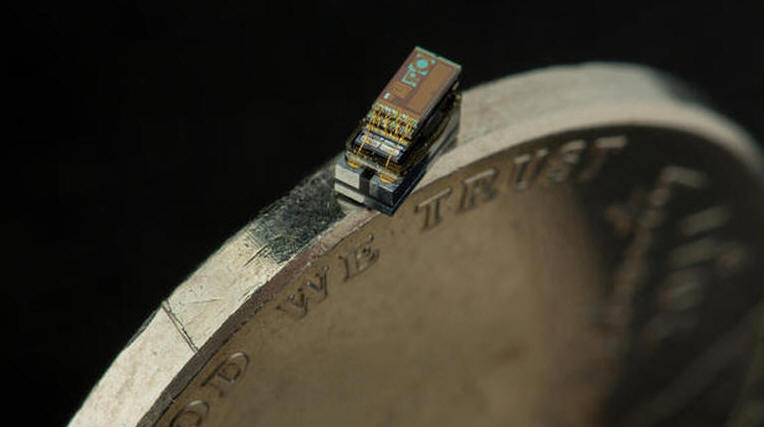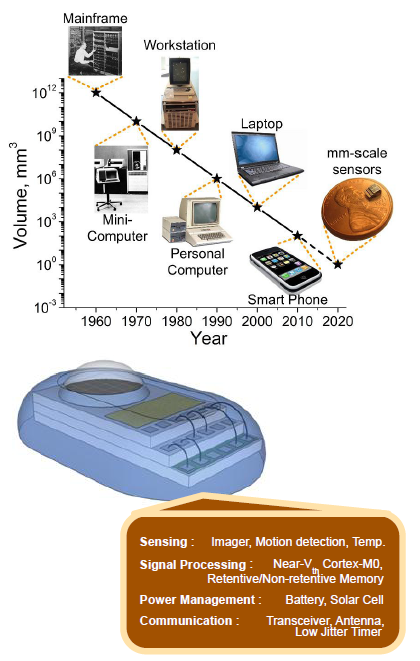Michigan Micro-Mote - the smallest computer in the world

As a result of the ten-year work of the computer faculty of the University of Michigan, it was possible to create a computer that is smaller in size than even a grain of rice. Its name Michigan Micro-Mote means “Michigan micro-speck”, and the abbreviation M ^ 3 refers to the cubic millimeter - the volume it occupies.
M ^ 3 can take photos, read temperature readings and pressure values. These features and small size allow, for example, to introduce it directly into the human body for taking readings. The use of the microcomputer is not limited to this - geologists are interested in the ability to adapt such devices to search for oil pockets that remain within the access range of an existing well. Or you can buy a handful of these crumbs and attach to all your things that you do not want to lose - from keys to wallets.

“The Internet of things is the concept of a world in which all familiar things have Internet access and can communicate with each other. All things have built-in computers, ” says Dag Spicer., curator of the Mountain View Computer Museum. This world is brought closer by microscopic computers.
David Blaau, a computer science professor at the university, explains: “People don’t know that most of the space, for example, in a smartphone, is occupied by a battery. If you reduce consumption, you can reduce the battery, and with it the size of the entire system. ”
To program and control such small computers, engineers had to use light transmission to transmit information. Data entry is carried out using high-speed flashes. And the computer is capable of outputting data using radio signals.
“There is no reason to stop there,” says Dennis Sylvester, Blaau’s colleague, “Why not get to the computer with a side of a hundred microns. And at this stage, it will already be possible to shove computers into living cells. When you bring to life what used to be science fiction, such things are easy to imagine. ”
The miniaturization of computers has come a long way - from computers the size of a room to personal computers that fit in the flash drive form factor , not to mention modern smartphones. And some scientists manage to create logic elements the size of a cell . The computer is no bigger than a picture - this is a new breakthrough.
